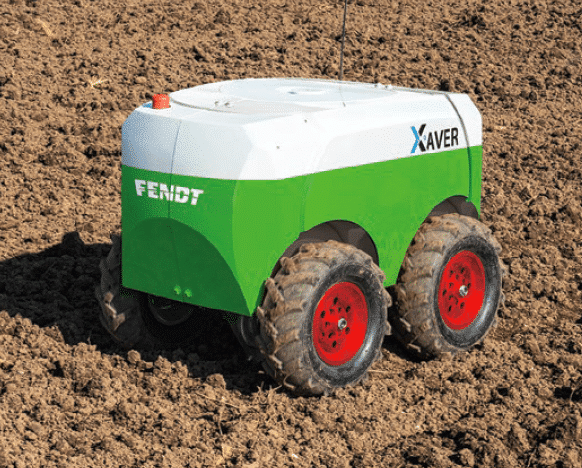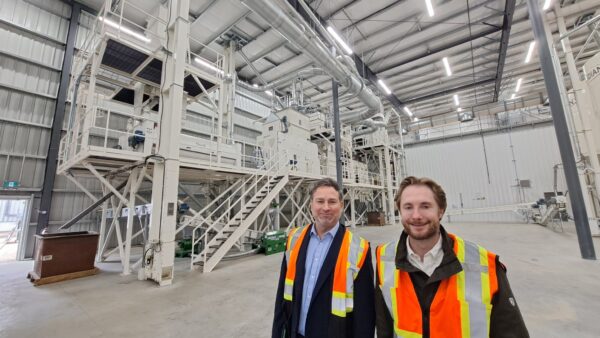High-precision planting technologies may allow breeders to do things that today are considered science fiction.
If one thing is for certain in agriculture, it’s that more technology is coming, especially related to precision agriculture.
And it’s not just about software making field scrips, but about hardware. How will super-precise planting systems impact on crop production and on plant breeding?
For Dr. Peter J. Lynch, vice-president of research at AgReliant Genetics and its PRIDE Seeds brand, the connection between corn breeding and new planting technologies is centered on better data quality.
“As that tech becomes more robust and sophisticated, it provides us with more information,” he says. “If our research seeds can be planted with higher levels of precision and we can have access to data about that planting, this will help in driving our best possible decisions in developing new hybrids. As a seed researcher and breeder, this is one of the reasons I get excited about new technology.”
One such new technology is called Xaver from AGCO/Fendt. As explained in a recent article from staff at the Ontario Ministry of Agriculture, Food & Rural Affairs, “the vision of the Xaver system is to have a trailer that is left at the edge of the field containing little programmed bots and a charging station. The system is controlled by cloud technology through a smartphone. It can carry out tasks in the field such as to load up with seed, go the field, plant the crop, tell the farmer where every single seed was planted via GPS, return for fill up when empty, return to the charging trailer when batteries get low, and communicate with each other so if one is disabled others come to take over.”
OMAFRA staff also make the point that farmers often cite poor seed-to-soil contact or depth control as reasons for not adopting no-till, but that a super-precise seeding platform “could essentially be equipped and programmed to create an optimized micro-environment around each individual little seed it ‘pokes’ into the soil. It could vary how it achieves this micro-environment across the field giving optimal seeding conditions regardless of changes in soil type, slope, soil moisture and so on.”
And, because it has recorded the position of every individual seed that has been planted, “the system can return throughout the season and tend to each plant for its nutrient and pest protection needs.” Proof of concept for Xaver was achieved in 2017 and the firm has been improving the technology ever since.
To understand potential impacts of this sort of technology on breeding, we checked in with several front-line breeders and agronomists.

More Data, Better Decisions
Graham McGregor also focusses on the data to be gained by the technology, noting that in any breeding program, removing variables is the key to demonstrating a hybrid’s agronomic performance. “Skips, gaps, double plantings, side wall compaction variation across the field, seed depth and other variables all play a factor in hybrid and varietal performance,” explains the field testing and operations lead (North region) at Bayer Crop Science.
“By utilizing precision seeding technologies, we can eliminate variables so breeders can better identify product performance based on a true genetic level, and not due to randomized field effects.”
For Steve Denys, director business management for Maizex Seeds, the way this type of technology will aid in precision planting in specific zones in a field may be useful as most corn test plots are usually placed on the best part of a farm. “In some cases, the best hybrid in this plot might work everywhere, but odds are that a hybrid that does not do as well in an ideal setting, might actually be the best hybrid for on the heavy clay or poorly-drained part of the farm,” he says.
So, while he notes multi-hybrid planting may allow the breeder to commercialize more varieties for different conditions, he says the challenge still remains the logistics of planting multiple varieties in the field.
Specific Traits
In terms of how super-precise planting could impact the development of specific traits, Lynch centres in on planting conditions in early spring. “Traits related to early germination will continue to be important to breeders,” he says. “The farmer wants earlier and earlier planting and reduced risks from doing this. We’re already breeding for fast emergence in traditionally harsh conditions, so precision planting technology will be helpful.”
However, Greg Stewart, lead agronomist at Maizex Seeds, is of the view that improvements in planting precision will have little impact on the genetic improvement of corn.
He notes that if one compares seeding technology (equipment improvements, new precision ag approaches) to genetic advances in terms of yield achievements over the last 40 years, it’s “maybe” a ratio of 25:75. “Will moving to next level super-high precision planting change that?” he asks. “I doubt it.”
He does think, however, if perhaps a super-high precision planter was able to place seed in a field well before temperatures or moistures were suitable, then a seed treatment that consists of some sort of polymer coating could ‘preserve’ the seed until conditions were conducive to germination.
“These polymers have been around already, but this could represent an interesting option,” he says.
Denys agrees seed treatments certainly hold potential, but says the reality is there is only so much space on the seed for stacking seed treatments both physically and perhaps biologically.
Lynch also points out that more precision in planting may enable corn breeders to help farmers further increase population rates. Director of Global Commercial Crop Care for AGCO (and agronomist) Darren Goebel believes that’s true. He notes Xaver can reduce risk of root and stock lodging that can result with increased plant populations in row planting scenarios, because “with Xaver, growers and breeders can use pattern planting where plants are equidistant to each other, for example 18 or 12 inches, depending on soil type and other factors.” However, a specialized harvester would be required.
Stewart takes a different point of view. He makes the point that current technology has “plenty” of capability to change population rates, “and in fact, current technology — variable rate seeding, multi-hybrid planters and so on — is still ahead of our ability to put it to use as effectively as we would like.”
It’s All About Data
When asked what other new technologies might assist breeders, Lynch again goes back to data. “We’re already using drones to better understand the quality of our experimental plots. With satellite imagery and more sophisticated sensors on drones, we will have more data to help us better understand how hybrids perform under stressful conditions, potentially at several points in the growing season.”
Top of Lynch’s wish list for technology that doesn’t yet exist for breeders is something that would provide significant insight about the world underground.
“We don’t have a very easy way of understanding what’s happening with the corn plant beneath the soil,” he notes, “and having better information about differences in root structure at the middle and late stages of the crop would be very useful.”
For McGregor, the ability to leverage digital imagery and predictive algorithms to make earlier decisions and selections would be a breeding game changer. “Presently, we spend years evaluating crop performance and the ability to characterize performance earlier in the development of a product,” he explains. “Therefore, allowing ‘step change’ products to come to market faster would be ideal.”













